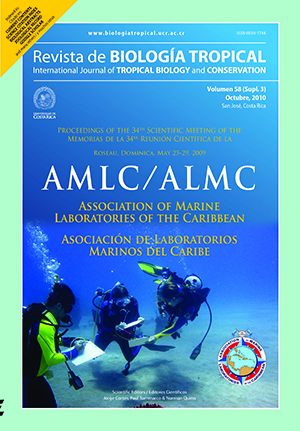Abstract
Discovery Bay is one of nine sites around Jamaica’s coastline, soon to gain the legislative protection of Fish Sanctuary (and Scientific Reserve) status. Cumulative natural and anthropogenic impacts drove the 1980’s coral to algae phase shift. Discovery Bay CARICOMP data (1994 to 2007) showed an increase in coral cover from less than 5% reported in the mid 1980’s to 11.7±0.31% (mean±SE) despite chronically high algal cover (61.4±2.2%) at 9m. Coral cover has been sustained despite low urchin densities (0.99±0.91 urchins m-2), low juvenile coral abundance (2.15±0.19 corals m-2) and coral mortality from repeated bleaching events. Community metrics from the CARICOMP site were compared to an adjacent reef habitat which was found to have higher coral cover (16.36±3.1%), as well as higher urchin (13.7±0.84m-2) and juvenile coral (9.7±1.7m-2) densities. Large branching coral species were absent along the CARICOMP transects and sparse at the nearby shallow reef. Both sites continue to be heavily overfished. Local history records the use of spatially and temporally isolated management strategies which have attempt to rehabilitate various aspects of this area. This unique temporal data set (based on the CARICOMP Methods Manual 2000) provides a baseline for evaluating Government (in)action and is used to justify proposals for ecosystem management which could facilitate phase shift reversal in a coral dominated system. An ecosystem approach that implements several concurrent strategies within and adjacent to the Reserve could accelerate the recovery process. The long term viability and benefit of both old and new marine protected or reserve areas could be enhanced through coral gardening on artificial reef structures with a view to restoring the reefs’ three-dimensional complexity. Such actions could theoretically accelerate phase reversal to coral dominated reefs common in the area prior to the devastating impacts of the 1980s.##plugins.facebook.comentarios##

This work is licensed under a Creative Commons Attribution 4.0 International License.
Copyright (c) 2010 Revista de Biología Tropical
Downloads
Download data is not yet available.






